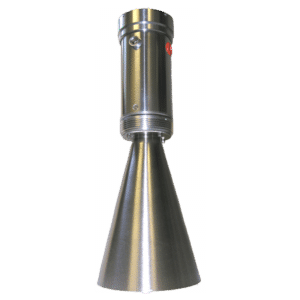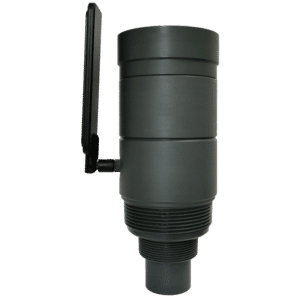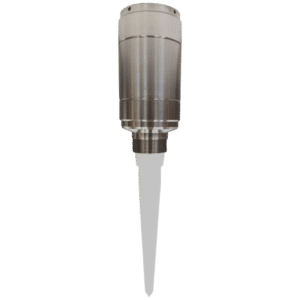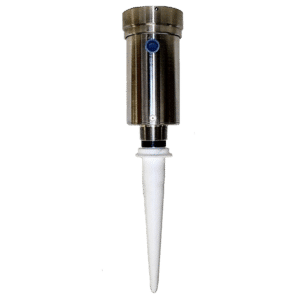Wireless Level Measurement for Remote Monitoring Applications
The R-RMB pulse radar sensor from ABM is the ideal solution for liquid and solid remote level applications with vapours, gases (CO2, CO, H2S, H2), foaming, ice, volatile surfaces, wind, temperature variations, extreme temperatures or extreme dust. The low-power sensor with built-in cellular modem is plug-and-play, automatically connecting to the ABM servers that are fully secured for ease of installation – no need to set up SIM cards.
The non-contact radar sensor provides level measurement up to 340 ft (103.6 m) with simple remote web calibration. The sensor can be factory configured for a variety of applications with multiple mounting options.
Industries
- Water
- Wastewater
- Environmental
- Petrochemical
- Oil and Gas
Applications
- Water towers / tanks
- Water level in manholes / sewer systems
- Flood monitoring
- Refinery tank farms
High Performance, Maintenance Free Radar Sensor.
- Self-adjusting sensor, automatically eliminates false echoes without user involvement
- High resolution with short transmitted pulses ensures accuracy
- Very narrow radiation beam enables installation close to tank walls
- No influence from mounting, walls or internal obstructions on sensors performance
- No influence from temperature, pressure or humidity on measurement
- Teflon rod antenna resists material and moisture build-up
- Non-contact and self-cleaning nature provides maintenance free operation
Technology Advantage
ABM’s smart, self-adjusting radar sensors continually monitor conditions in the environment and automatically adjust the transmitted energy and sensitivity to match the current tank conditions. This technique allows the receiver to detect only one echo from the measured media while all false echoes are pushed under the noise level and eliminated. The self-adjusting technique also gives the same amplitude of wanted echoes regardless of distance to the target. With one echo only, signal processing is very simple and the certainty of the measured echo being the target is 100%. This makes the ABM sensors very accurate and reliable.
Very narrow transmit pulses enable liquid interface detection, such as oil-water interface. The radar sensor has a very fast response, up to 20 updates per second, enabling control for fast moving applications (i.e. vehicles, boats, etc.). Very high dynamics enables detection of very low dielectric constant liquids (>2).
Operation is plug-and-play with ABM sensors. The self-adjusting nature means there is no need for mapping or profiling the environment or downloading several parameters. These signal process operations commonly used by other brands reduce the certainty in the measured materials level. ABM sensors are smart and automatically adapt without user involvement.
Measuring Range: Up to 340 ft (103.6 m)
Technology: Pulse radar
Frequency: 6.3 GHz (5.8 GHz outside North America) or 6.3/26 GHz (dual frequency). Application dependent
Calibration: Programmable via Sensor Access website
Output: Cellular data transmission to ABM sensor servers
Power: 12 to 30 VDC, 0.2 A max @ 24 VDC for short time duration
Communication: Remote via Sensor Access website
Ambient Temperature: -40 to 60°C (-40 to 140°F)
Enclosure: Aluminum standard. SS316L optional
Protection Rating: NEMA 6 (IP68)
Antenna: Teflon rod antenna or SS316L horn
Process Connection: 1.5″, 2” or 3″ NPT mounting
Process Temperature: -40 to 80°C (-40 to 176°F)
Process Pressure: ≤ 5 Bar (72.5 psi)




